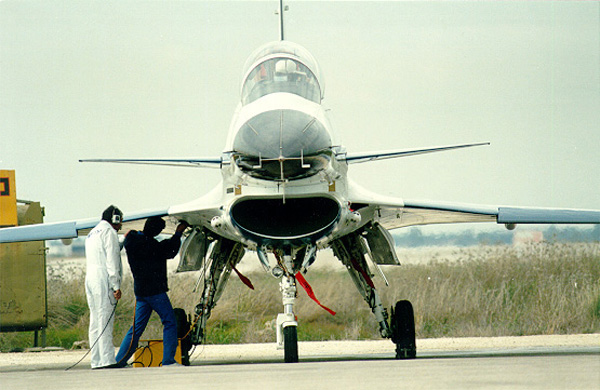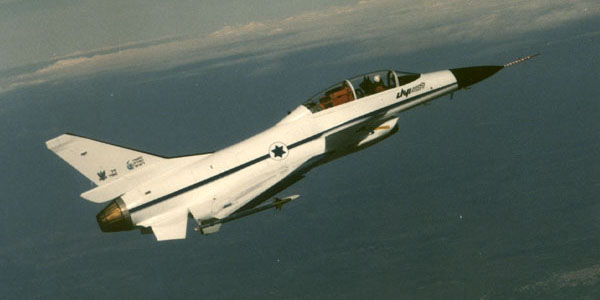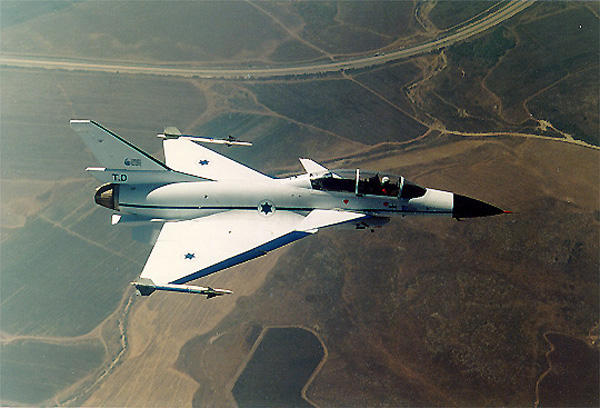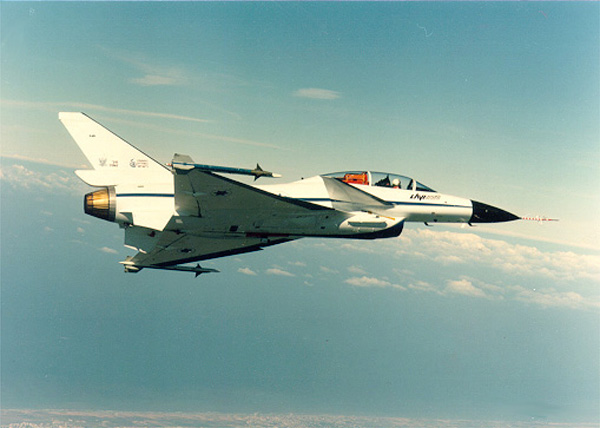|
|
Lavi |
|
| |





|
| |
| |
A multi-role fighter. The Lavi never did make it to operational service, but nonetheless forms an important milestone in the development of the IAF, and even more so - of the IAI. The independent development of a state-of-the-art plane was a first in the annals of Israeli technology. True - the IAI had previously produced the Nesher, Kfir and Tzukit, but those had essentially been upgrades - whereas this was a plane planned and manufactured in Israel from scratch.
The Lavi was intended to become the IAF's standard-bearer and Israel's first line plane. It was to be one of the world's most advanced planes at the turn of the millennium.
The Lavi's development program began in February 1980, when the Israeli government authorized the IAF to present it with a list of technical specifications for the development of the IAF's future fighter. 18 months later, in October of 1982, the process of developing the plane began at IAI, after the Lavi's engine had been picked - a Pratt & Whitney model.
The single-seat Lavi was intended to replace the Skyhawks, and carry out a variety of air-to-ground attacks at close to medium range, as well as protecting the skies over Israel. The tandem seat model of the Lavi was to serve as an advanced stage training plane, and occasionally carry out combat missions as well.
The Lavi was a small, smart, highly robust fighter, that was to be the IAF's solution for the future battlefield. Its uniqueness lay in the combination of a physically small plane with very sophisticated, software-rich systems. This meant lower purchase, usage and maintenance costs, compared to other planes. Technically, the Lavi was a very advanced plane, with a modern aerodynamic shape that gave it excellent maneuverability, low armed drag, and the ability to carry a large payload at high speed to long distances. The Lavi could carry and deploy the most advanced weapons systems in existence.
The functional features of the plane - and especially of its cockpit - were planned by active IAF fighter pilots, in a way that let the pilot handle the tactical aspects of the battle, without having to worry about monitoring and controlling the various sub-systems. The avionics of the Lavi were considered to be innovative and groundbreaking, and included self-analysis equipment, to make maintenance easier. On December 31st 1986, the first prototype of the plane took off on its maiden flight, in the first of the Lavi's numerous test flights. The test pilot, Menachem Shimol, who headed the IAI's Air Operations Section, took off at 13:21 and stayed in the air for 26 minutes, during which he checked the engine and controls.
About three months later, a second prototype took to the air. In its maiden flight, the engine systems, flight control, electrical system, hydraulics and air conditioning were evaluated. The second prototype had some improvements over the first, with a belly-mounted fuel tank, a special midair refuelling pipe and several avionic systems that were not employed in the first prototype.
The IAI had produced three prototypes, out of the five originally planned, when the Israeli government decided to cancel the project, on August 30th 1987, because of budgetary problems and bickering among various economic and political pressure groups.
The decision was met with violent demonstrations by the IAI workers - but to no avail. The IAI had no choice but to lay off close to 5,000 employees.
The third Lavi prototype, the B-3 "Technology Demonstrator", was built two years after the project had been cancelled. It serves the IAI to this day for testing and evaluating avionics intended for sale overseas. |
| |
 |
| |
Primary Role |
Multi-task fighter |
Original |
Israel |
Dimensions |
Wingspan: 8.78 m
Length: 14.57 m
Height: 4.78 m
Wing area: 33.05 sq. m |
Capabilities |
Maximum speed: Mach 1.85
Max. payload capacity: 7,200 kg
Operational range: 2,100 km |
Weight |
Basic takeoff weight: 9,990 kg |
Power Plant |
Pratt & Whitney PW1120 engine
with a thrust of 9,344 kg |
|

|
